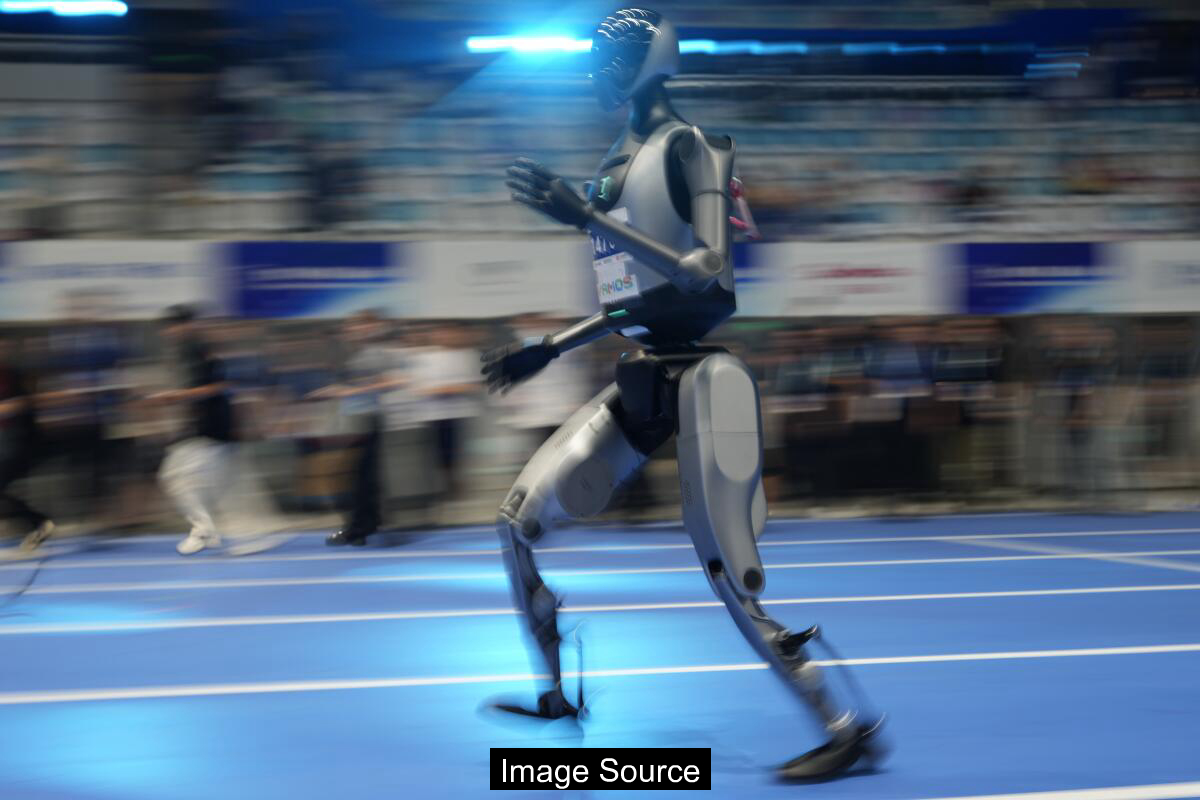In a groundbreaking event showcasing technological innovation, Qingdao, China, welcomed international teams competing in the inaugural World Humanoid Robot Games. The competition, featuring advanced robotic systems designed to perform complex physical tasks, marks a significant milestone in the global development of humanoid robotics and artificial intelligence.

The First Global Humanoid Robot Competition Launches in Beijing
The inaugural World Humanoid Robot Games opened in Beijing with a spectacular display of technological prowess. Humanoid robots demonstrated remarkable capabilities, performing complex physical tasks including hip-hop dancing, martial arts, and musical performances. The event represents a significant milestone in robotics and artificial intelligence development.
Over 500 robots from 280 teams representing 16 countries have gathered to compete in various sporting events. Participating nations include technological powerhouses like the United States, Germany, and Japan, alongside China’s robust robotics teams. Universities and research institutions are fielding competitive robot squads, highlighting the academic and technological investment in this emerging field.
The opening ceremony showcased robots’ evolving physical capabilities through dynamic demonstrations. Robot soccer players executed goals, performed backflips, and displayed autonomous recovery after falls. Some robots even modeled fashionable clothing alongside human models, underscoring their increasing sophistication and adaptability.
Competition Scope and Events
The three-day competition features multiple sporting events designed to test humanoid robots’ agility, coordination, and decision-making capabilities. Primary competitions include soccer, running, boxing, and other physically demanding challenges. Each event evaluates robots’ ability to simulate human athletic movements with precision and efficiency.
Participating teams come from diverse backgrounds, including prominent robot companies, leading Chinese universities like Tsinghua and Peking University, and even three middle schools. This broad participation reflects growing interest in robotics across academic and commercial sectors.
Ticket prices range from 180 yuan ($25) to 580 yuan ($80), making the event accessible to technology enthusiasts and the general public. The competition aims to demonstrate humanoid robots’ potential and inspire future technological innovations.
Robot Performance Highlights
During the opening ceremony, robots displayed impressive skills that pushed technological boundaries. One robot soccer player successfully scored a goal after multiple attempts, while another demonstrated remarkable resilience by independently standing up after falling.
Musical performances revealed robots’ capacity for complex, coordinated movements. Robots played keyboard, guitar, and drums with surprising precision, challenging traditional perceptions of machine capabilities. These demonstrations underscore the rapid advancement of artificial intelligence and robotic engineering.
Some robots experienced technical challenges, such as one model falling and requiring human assistance to leave the stage. These moments highlight the ongoing development process and the complex engineering behind humanoid robotics.
Understanding Humanoid Robot Technology
Humanoid robots represent a cutting-edge intersection of artificial intelligence, mechanical engineering, and computer science. These machines are designed to mimic human physical movements and increasingly, human-like cognitive processes.
Key technological challenges include developing sophisticated sensors, advanced machine learning algorithms, and robust mechanical structures that can replicate human flexibility and responsiveness. Researchers must address complex problems like balance, spatial awareness, and adaptive decision-making.
The World Humanoid Robot Games serve as a global platform for showcasing technological advancements and fostering international collaboration in robotics research.
Frequently Asked Questions
Participants and observers have numerous questions about this groundbreaking event. Two common inquiries provide insight into the competition’s significance and technological implications.
Q1. What makes these robots different from previous generations?
A1. Modern humanoid robots demonstrate unprecedented levels of autonomous movement, complex task execution, and adaptive learning capabilities. They can perform intricate physical tasks with increasing precision and minimal human intervention.
Q2. How might these technologies impact future industries?
A2. Humanoid robots could revolutionize sectors like manufacturing, healthcare, entertainment, and disaster response by providing adaptable, intelligent mechanical assistants capable of performing dangerous or repetitive tasks.
Strategic Pointers
The World Humanoid Robot Games represent more than a technological showcase; they signal a transformative moment in human-machine interaction. By pushing technological boundaries, these competitions accelerate robotic development and public understanding of artificial intelligence’s potential.
China’s prominent role in hosting and participating in this event underscores the nation’s commitment to becoming a global leader in robotics and AI technologies. The competition provides a platform for international collaboration and technological exchange.
As humanoid robots continue to evolve, they will increasingly challenge our understanding of machine capabilities and potential societal integration. The World Humanoid Robot Games offer a glimpse into a future where intelligent machines become sophisticated partners in human endeavors.
※ This article summarizes publicly available reporting and is provided for general information only. It is not legal, medical, or investment advice. Please consult a qualified professional for decisions.
Source: latimes.com